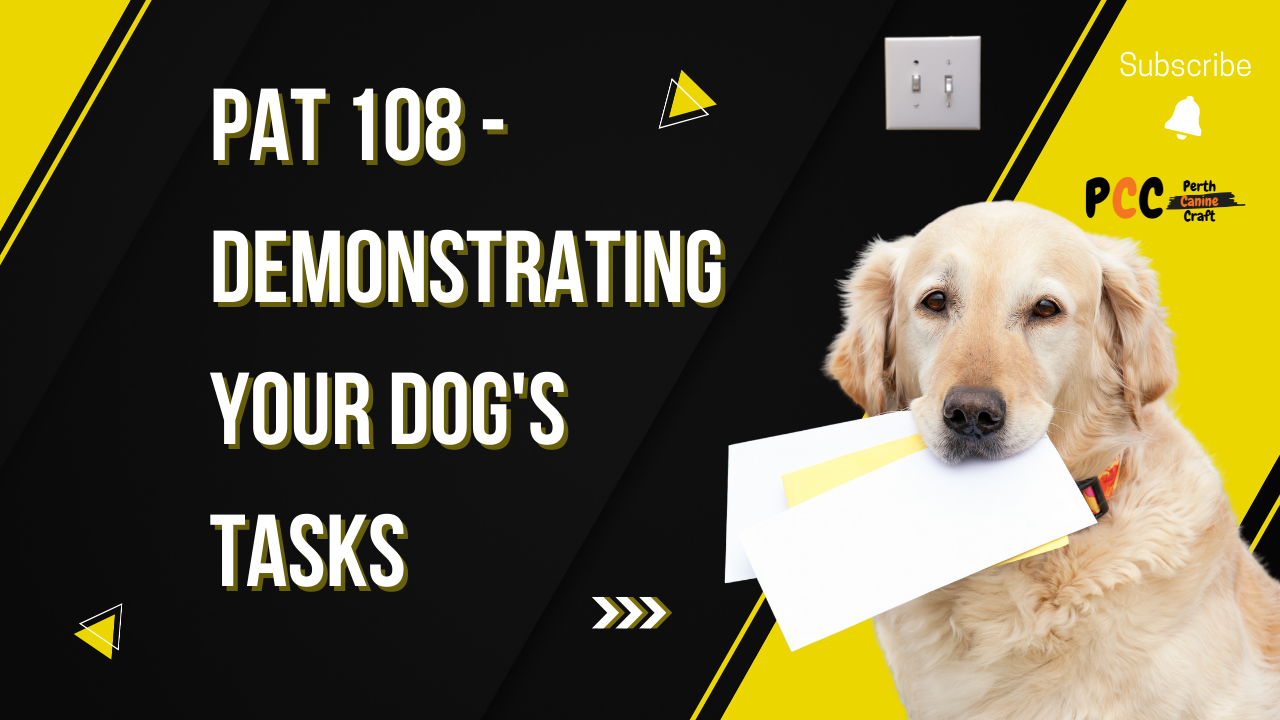Hi, I’m Ariza from PCC ATA Ubuntu Support. In this video series, I will share what I’ve learned, helping you prepare for the PAT and increasing your chances of passing.
Informing Your Assessor:
There are two things you need to inform your Assessor about:
- Specific Trained Tasks: What tasks is your dog trained explicitly for that can be replicated in the test? Some tasks are harder to replicate, like detecting a drop in blood sugar or hormones before a seizure. The harder it is to replicate the cue, the harder it is to train, and the dog’s reliability might be questioned.
- The Sequence of Events: As a Trainer, when I work with parents, participants, OT, etc., I need to know the sequence of events the dog must perform:
- What is the cue the dog is responding to? Visual, vocal, movement, hormonal, etc.
- How is the dog responding? What task will the dog perform?
- What will the Handler’s response be? They must be compliant; the dog’s job is to prompt and assist, not force the Handler to comply.
Understanding Triggers:
I volunteer for PTSD Dogs Australia, which helps Veterans and First Responders with PTSD. The test states that the dog must be trained to bark and stop barking on command, but this can be problematic for people sensitive to noise triggers. You must communicate any such issues to the Assessor.
Your Challenge:
The more likes, shares, and comments I get, the more information I will provide. Questions are welcome, and I’ll make some videos answering them!





0 Comments